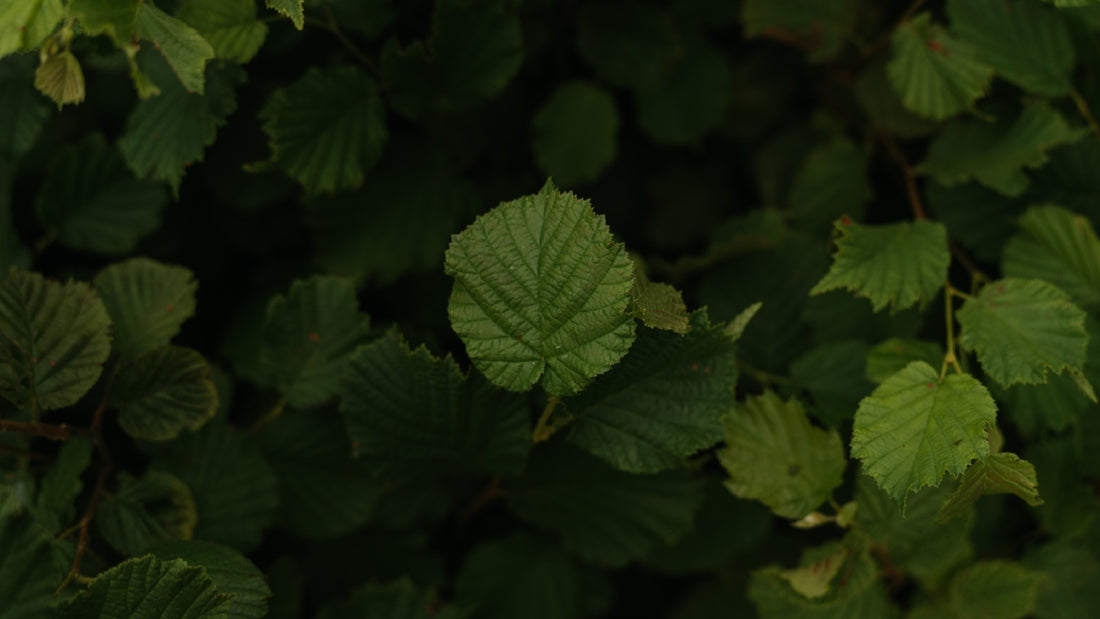
Hazel Trees a wildlife champion
Share
Hazel (corylus avellana) is a remarkable and versatile tree, known for its distinctive catkins, bendy stems, and late-summer nuts. It plays a crucial role in conservation and is highly valued for its numerous uses. Loved by people, squirrels, and hazel dormice alike, hazel is a tree that supports over 250 insect species as well as small mammals and birds.
Hazel makes stunning wildlife boosting hedging but for this article we will talk about it's equally environmentally beneficial role as a tree.
Characteristics of Hazel trees
Height and Lifespan: When left to grow naturally, hazel trees can reach up to 12 meters in height and live for about 80 years. However, when coppiced, they can live for several hundred years. Coppicing involves periodically cutting the tree down to its base, which promotes regrowth and extends the tree's life.
Bark and Stems: Hazel has smooth, grey-brown bark that peels as it ages. Its stems are bendy and covered in hairs. The leaf buds are oval, blunt, and hairy, making them distinctive.
Leaves: The leaves of the hazel tree are round to oval, doubly toothed, hairy, and pointed at the tip. They are soft to the touch due to the downy hairs on their underside and turn yellow before falling in autumn.
Flowers: Hazel is monoecious, meaning it has both male and female flowers on the same tree. Male catkins, resembling lambs' tails, appear before the leaves in mid-February, hanging in clusters. The female flowers are tiny, bud-like with red styles.
Fruits: Once pollinated by the wind, female flowers develop into oval fruits that mature into nuts with woody shells surrounded by a cup of leafy bracts. These nuts are highly valued by wildlife and humans alike.
Winter Identification: In winter, hazel can be identified by its nuts, which are held in short, leafy husks that enclose about three-quarters of the nut. Small, green catkins can also be present in autumn.
Habitat and Distribution
Hazel is native to much of Europe, parts of North Africa, and western Asia. In the UK, it is commonly found in the understorey of lowland oak, ash, or birch woodland, as well as in scrub and hedgerows. It thrives in well-drained to moist soils and can tolerate shade, making it an excellent choice for various environments.
Hazel trees: Ecological Importance
Support for Wildlife: Hazel leaves provide food for caterpillars of moths such as the large emerald, small white wave, barred umber, and nut-tree tussock. Coppiced hazel supports a diverse habitat, promoting wildflower-rich environments that attract butterflies, particularly fritillaries. Ground-nesting birds like nightingales, nightjars, yellowhammers, and willow warblers find shelter in coppiced hazel.
Hazel Dormouse: The hazel dormouse, an endangered species, heavily relies on hazel. Dormice eat hazelnuts to fatten up for hibernation and consume caterpillars found on the leaves in spring.
Birds and Small Mammals: Hazelnuts are a crucial food source for woodpeckers, nuthatches, tits, wood pigeons, jays, and small mammals such as wood mice and bank voles. Hazel flowers provide early pollen for bees, although it is challenging for them to collect due to the non-sticky nature of the pollen.
Fungi and Lichens: The trunks of hazel trees are often covered in mosses, liverworts, and lichens. The fiery milkcap fungus also grows in the soil beneath hazel trees, contributing to the biodiversity of hazel woodlands.
Mythology and Symbolism
Hazel has a rich history of symbolism and mythology. It is considered a magical tree, with hazel rods believed to protect against evil spirits and used for water-divining. In some regions, hazelnuts were carried as charms to ward off rheumatism. In Ireland, hazel was known as the 'Tree of Knowledge' and was a symbol of fertility in medieval times.
Uses of Hazel trees
Wood and Stems: Hazel wood is highly valued for its flexibility and strength. Historically, it has been used for thatching spars, net stakes, water-divining sticks, hurdles, and furniture. Today, it is popular for making pea sticks and bean poles for gardening.
Nuts: Hazelnuts, or 'cobs', are not only a valuable food source for wildlife but are also enjoyed by people. Hazel was once grown extensively in the UK for nut production until the early 1900s. Now, cultivated varieties, known as cob nuts, are still grown in Kent, although most hazelnuts are imported.
Conservation: Hazel coppicing is an essential conservation strategy, promoting biodiversity by creating open, wildflower-rich habitats. However, in specific contexts, such as the ancient Atlantic hazel woods of Scotland's rainforest zone, coppice management is not recommended due to the sensitivity of the unique bryophytes and lichens. Specialist management advice should be sought for such habitats.
Climate Adaptability and Growth
Hazel prefers moist but well-drained soils and can tolerate shade, though it thrives in open spots rather than deep shade. It responds well to being cut back, allowing for controlled height and promoting vigorous growth. Hazel trees grow about 40-60 cm each year and can reach a full-grown height of around 10 meters, although pruning can maintain a shorter stature.
Biodiversity and Ecosystem Services
Hazel supports over 250 insect species and provides habitat and food for numerous birds and mammals. Its dense foliage and nut crop make it an excellent tree for enhancing biodiversity. Early spring catkins followed by late-summer nuts offer seasonal interest and valuable resources for wildlife.
Conservation Challenges and Future Prospects
While hazel is a resilient and adaptable tree, it faces challenges such as disease, climate change, and habitat loss. Sustainable management practices, including coppicing and habitat conservation, are crucial for maintaining healthy hazel populations and ensuring their continued ecological benefits.
Fun Facts and Cultural Tidbits
- Hazel trees are often associated with wisdom and protection in folklore.
- The genus name Corylus comes from the Greek word for helmet, referring to the nut's husk.
- Hazelnuts were historically used to make a coffee substitute and were a popular food source during times of scarcity.
- Hazel wood is still used today for traditional crafts and modern gardening tools.
Conclusion
The hazel tree (Corylus avellana) is a vital component of European woodlands, known for its ecological, cultural, and practical significance. From supporting diverse wildlife and contributing to conservation efforts to its rich history in mythology and human use, hazel remains an essential and cherished tree. With sustainable management and conservation, hazel can continue to thrive and provide its many benefits for future generations.



